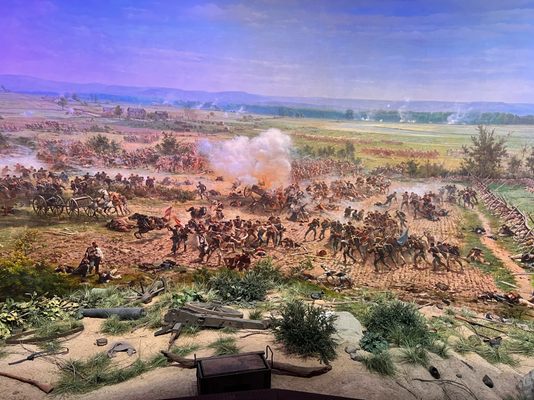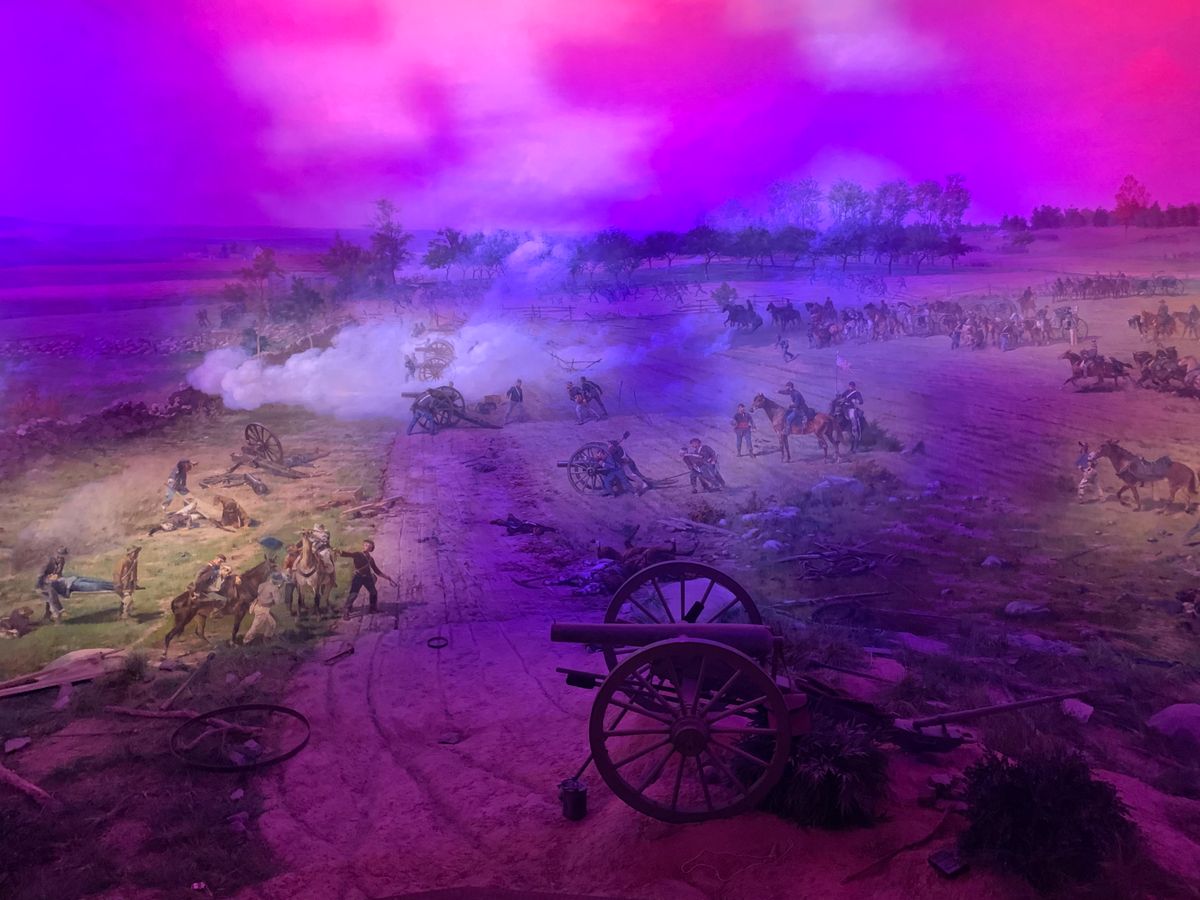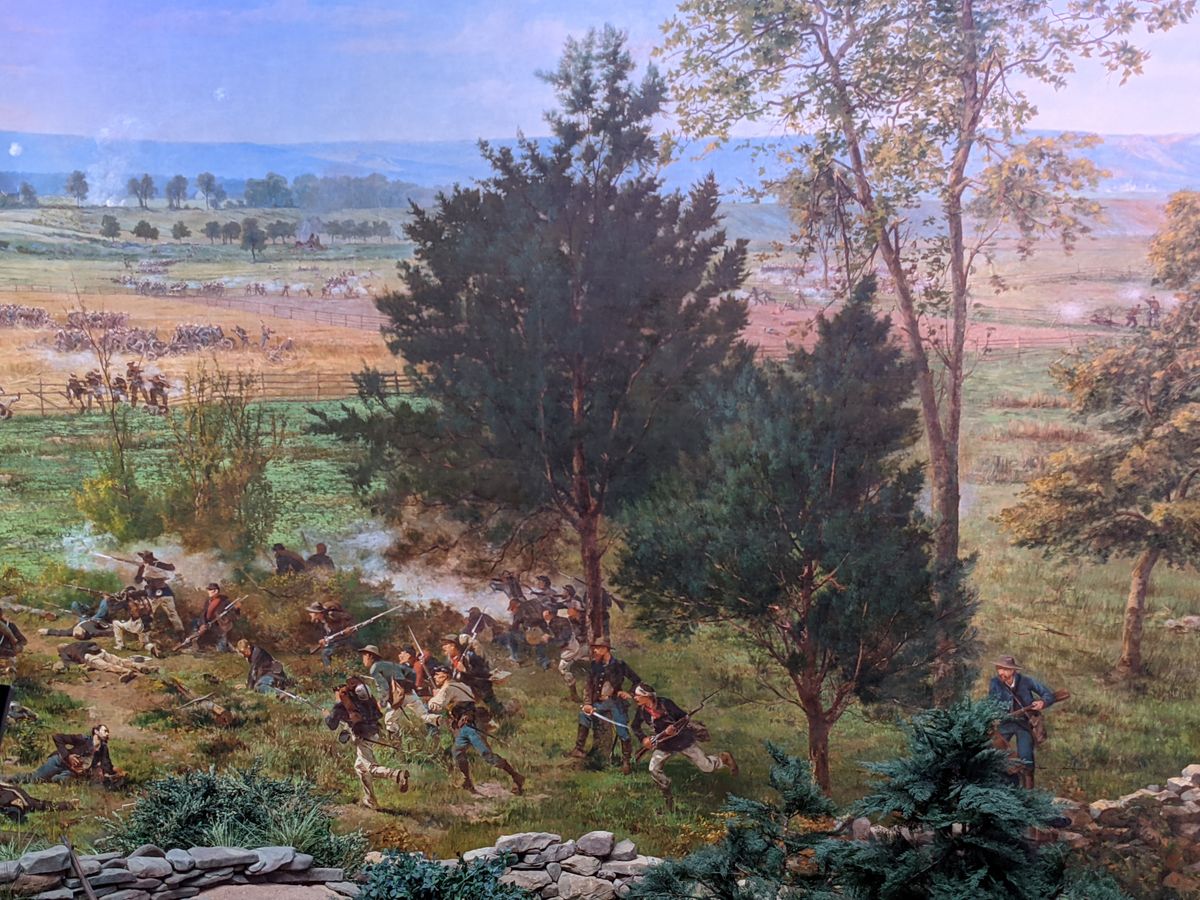About
Depicting one of the most dramatic moments of the Civil War, the Gettysburg Cyclorama was the IMAX experience of its day, surrounding visitors on all sides with a life-like portayal of Pickett's Charge.
This uniquely American battle scene of North versus South was actually painted by a Frenchman, Paris-trained Paul Dominique Philippoteaux. The artist had previously collaborated with his father on other battle scene cycloramas, panoramic images on the inside of a cylindrical platform, which were extremely popular in Europe in the 19th century.
The commission for the Gettysburg Cyclorama came in 1879 from a group of Chicgo-based investors. The massive painting was created by five artists over a year and a half. The final installation included not just the painted backdrop, but three-dimensional artifacts and objects in the foreground to lend further realism to the scene.
It was originally exhibited in Chicago in 1883 and was so successful that copies were made and exhibited in Boston, Philadelphia, and Brooklyn. It is the Boston copy that is now on display at the Gettysburg National Military Park Museum and Visitor Center. The Philadelphia version is known to have been destroyed; the location of the Brooklyn version is unknown.
The cyclorama on display in Gettysburg was restored by the National Park Service in 2005 and measures 377 feet in circumference and 42 feet tall. It weighs in at an estimated 3 tons.
Although few cycloramas of the hundreds that once lured crowds around the world still exist, there are a few notable survivors: In Wroclaw, Poland, the enormous 120-year-old Raclawice Panorama lets you step into the middle of the 1794 Battle of Racławice. In Istanbul, Turkey, the Panorama 1453 Museum displays a cyclorama that recreates the epic fall of Constantinople. A more modern example, the October War Panorama in Damascas, Syria, is dedicated to scenes from the 1973 October War between Israel, Egypt, and Syria.
Related Tags
Community Contributors
Added By
Published
March 20, 2013

















































































